The NZXT Manta mITX Case Review
by E. Fylladitakis on June 16, 2016 9:00 AM EST- Posted in
- Cases/Cooling/PSUs
- Mini ITX
- NZXT
- Case
The Exterior of the NZXT Manta
With a postmodern design sporting curved panels and smooth surfaces, the NZXT Manta is designed to stand out from the crowd. As we will see in the following sections, the curved panels are not just for show, adding to the functionality of the case. However, they also increase the width of an already significantly large Mini-ITX case. Measuring 42.6 cm tall, 24.5 cm wide and 45 cm deep (16.8 × 9.7 × 17.7 in), resulting to a volume of 47 liters, the Manta is massive for a Mini-ITX case. It is just 3% smaller than the Zalman Z9 Neo, a full ATX case, and nearly 60% larger than the Cougar QBX, which also is a tower Mini-ITX case. NZXT clearly was not very concerned about making the Manta compact, only to have a high performance gaming tower reduced down to Mini-ITX motherboard dimensions.
We received the black version of the Manta with a windowed side panel. NZXT also offers white and windowless versions. The satin black paint is very smooth to the touch and slightly resistant to fingermarks. On the other hand, the glossy acrylic window that NZXT installed is highly reflective, making it almost impossible to see inside the Manta from a large angle or if the lighting inside the case is poor. The “rainbow” effect seen in some of our pictures is caused by the camera’s polarizing filter, which is unsuccessfully trying to filter all of the lighting reflected by the acrylic panel.
11.2oz soda can inserted as a size reference.
The front panel of the Manta is entirely plain. There are no external drive bays, no buttons and no ports to be found on it. NZXT is even supplying their own company logo with the case’s bundle, allowing the users to choose where (and if) they want it adhered.
In order to reach the intake fan filter, the front panel needs to be removed. This is an easy task, as the panel can come off by simply pulling it from its bottom. The intake filter is a simple nylon filter that cannot stop small particles but can be easily cleaned and reused any number of times.
A closer look in between the side panels and the main body of the case reveals vents, which explains where the front intake fans draw air in from and where the air pushed by the top exhaust fans goes, as there are no other visible openings on the main panels of the case. This approach however undoubtedly adds a significant amount of air flow resistance that can adversely impact the performance of the cooling fans.
The front I/O ports and buttons can be found at the top panel. A large power on button can be seen to the left side of the panel, while two USB 3.0 ports and 3.5mm audio jacks have been installed to the right side of the panel. There is no door or cover for the USB/audio ports.
A look at the rear of the NZXT Manta reveals the presence of a 120 mm exhaust fan, which also hints that the case is just a shorter version of a gaming tower system. NZXT placed the PSU compartment at the bottom of the case.
The NZXT Manta stands on two very wide U-shaped legs. Four long anti-slip rubber pads keep the Manta from slipping on virtually any surface. A nylon filter can be seen covering the PSU intake, which can be removed from the back of the case.


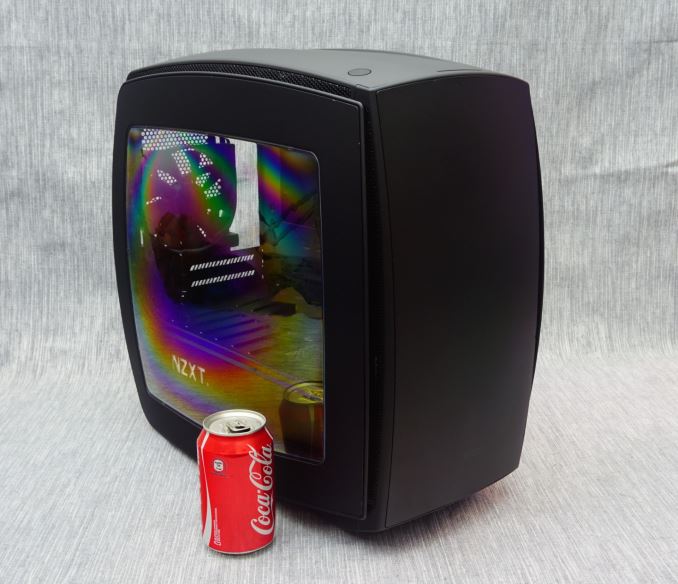
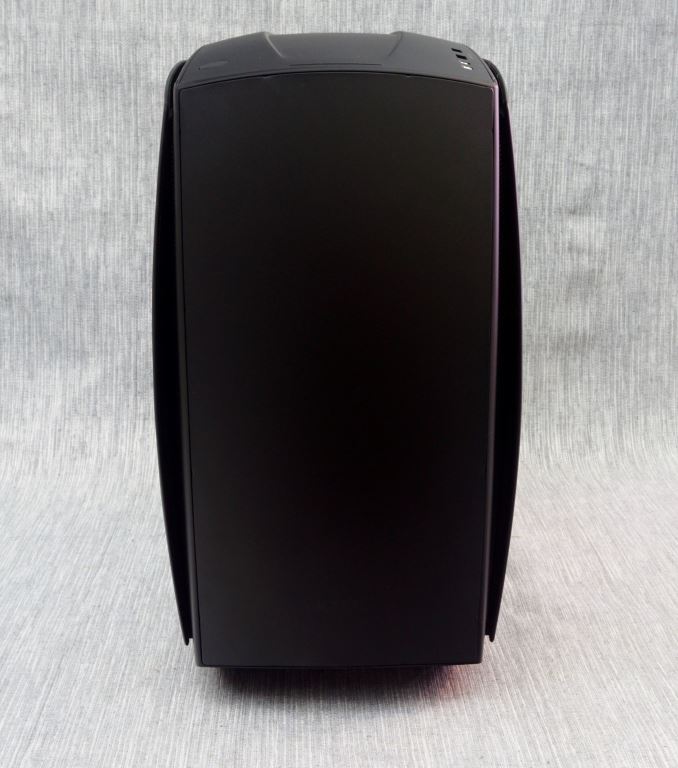
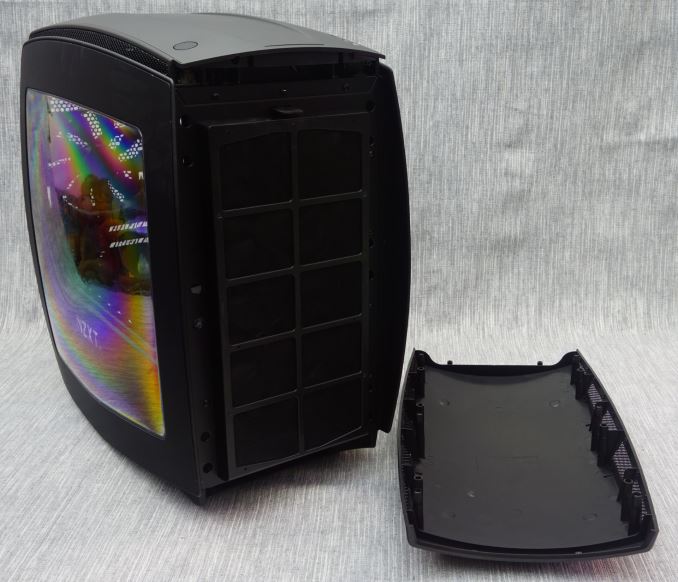
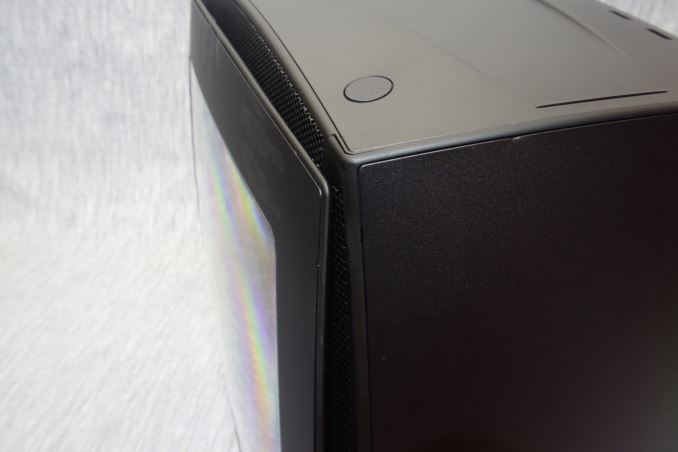

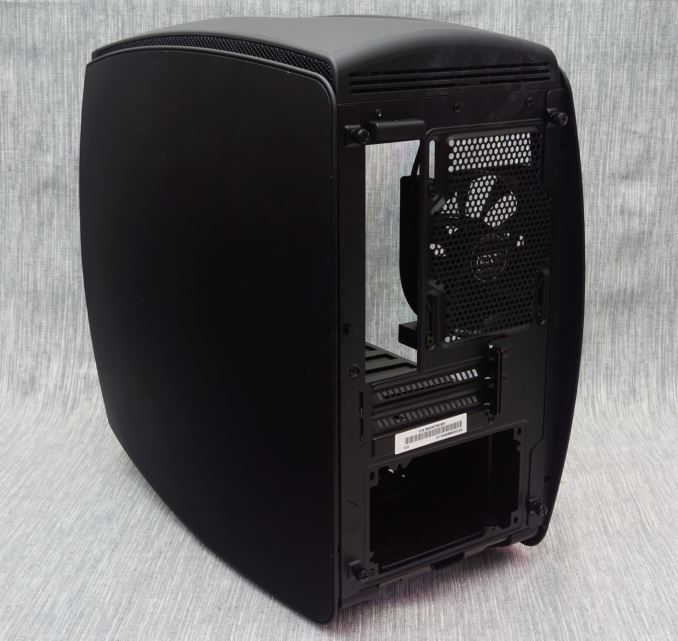
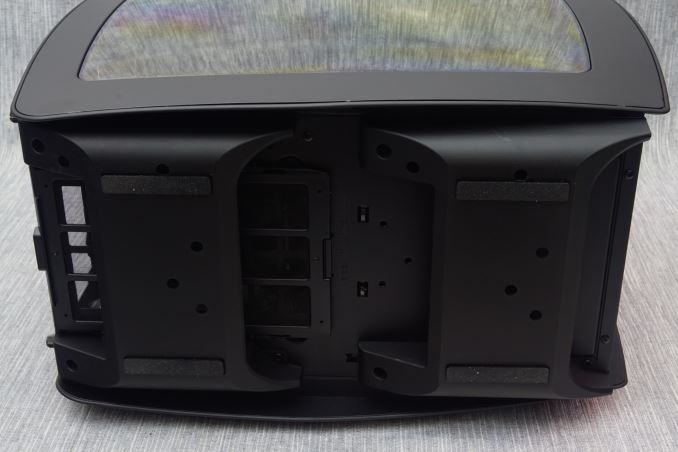








48 Comments
View All Comments
Flunk - Thursday, June 16, 2016 - link
I like the look of this, but it's just too big for a mini-ITX case. It's bigger than NZXT's own S340 full ATX case, which is much more practical.freeskier93 - Thursday, June 16, 2016 - link
I'm really baffled by this, I even pulled out the tape measure to measure my s340 and sure enough, basically the same.Lugaidster - Thursday, June 16, 2016 - link
Manufacturers don't get mITX at all. Anandtech doesn't either, apparently. Here's what enthusiasts look for in SFF cases:- Full-length video card compatibility with full wattage support
- Minimal Size
- Enough cooling for 250W GPU
- Decent cooling (though size is more important) for a maximum of 90W TDP in the CPU
- Low noise
And here's why, enthusiast mITX systems are based on Intel systems for the moment, and with the exception of a very specific X99 Asrock motherboard, all systems use 65W-90W Intel CPUs. Overclocking is secondary to noise and size as long as the system is capable of cooling a powerful enough system.
If the system uses full ATX PSUs it's already too big. Those are not needed for a SFF system even if going for an LGA2011 CPU with a Titan GPU, SFX-L serves the purpose just fine, and SFX does even, if you can bear the noise of the PSU when going full tilt.
Please, review cases that are smaller and give ratings accordingly. This particular case is a mess aesthetically and doesn't serve the purpose of a SFF system.
You should take a look at the Ncase m1 (oldie but goodie) or the Dan a4-sfx for inspiration on what enthusiasts look for in a SFF case.
Taverius - Thursday, June 16, 2016 - link
Mmnope. I have an ax760i psu and a k-series in mine. You don't speak for all of us.Lugaidster - Thursday, June 16, 2016 - link
I'm speaking for the frustration I see in communities of SFF systems when designs like this one appears. I won't post links, but hop around SFF forums in HardForum or more dedicated communities and you'll see what I mean. There's a reason the Ncase M1 has such a huge following despite it's price-tag.There's clearly demand for proper SFF systems that try to push the envelope with regards to the amount of horsepower you can put in the smallest possible enclosure, but manufacturers keep pushing fat cases that don't take advantage of the minimal designs mITX allow while maintaining compatibility with high performance parts.
I complain on this review because the case clearly isn't SFF and because the testing done doesn't reflect the type of components you'd want to put in an enthusiast case: 120W GPU with a 150W CPU is not representative, a 100W CPU (and this actually considers moderate overclock, the i7-4790K is 88W) with a 275W GPU is more like it.
JoeyJoJo123 - Thursday, June 16, 2016 - link
I agree with the sentiment of SFF, the I believe the crux here is that this case isn't targeted for small form factor buyers, even though it's restricted to Mini-ITX.Bear with me. Yes it's a Mini-ITX tower, but no it's not small form factor.
This is really intended for people that:
1) Already know they're never going to need anything more than 1 PCI-E slot for anything.
2) (Most important) Want to have a different case shape than a traditional "box".
As others have noted, this is bigger than some midtower ATX cases on the market, and if a user wanted to spend a limited budget more wisely, they'd get a comparable ATX motherboard (which are typically cheaper than Mini-ITX motherboards) and get a smallish ATX midtower (which could fit even more components than a Manta can and is cheaper). So ultimately, they're really only buying the case for the unique shape.
Lugaidster - Thursday, June 16, 2016 - link
Yes, the case is indeed odd, but the review treats it like a SFF case because it tests for components that supposedly would be on a SFF system, like a 120W GPU (I won't repeat myself on why I think the methodology for SFF reviews is flawed).If this case is indeed nothing more than a small tower, like you say, we should see it being compared against other tower systems with thermals according to that type of systems.
JoeyJoJo123 - Thursday, June 16, 2016 - link
I do agree there.The cases really should be compared, not in terms of motherboard size compatibility, but in terms of case volume. I don't think a case of this kind of volume should be compared to a Node 202, for example, even though both are Mini-ITX cases. The inherent difference of volume speaks to different form factor categories, and therefore different customers.
BrokenCrayons - Thursday, June 16, 2016 - link
[H]'s forum is about the last tech forum I'd submit as a place from which to draw a credible sample. The people there are nice and some are pretty informed, but it has its own community-pervasive distortions.TheinsanegamerN - Friday, June 17, 2016 - link
Some of us are still waiting for the A4-SFX to come out. That thing is gonna be sweet when it finally comes out